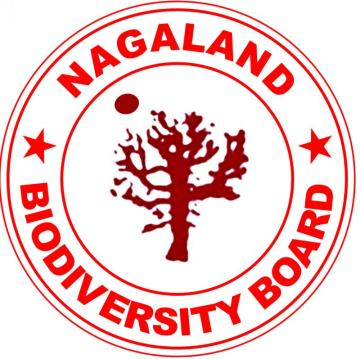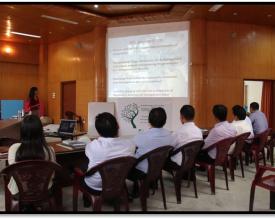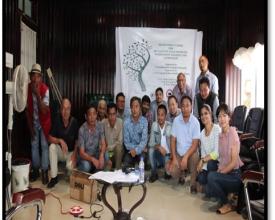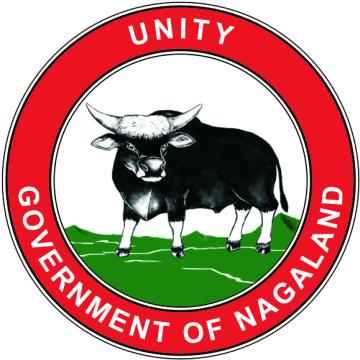
Adaptación del Plan de Acción sobre Biodiversidad a los Objetivos Nacionales de Biodiversidad, los Objetivos de Desarrollo Sostenible y el Marco de las Metas de Aichi

1. Revisión de la estrategia y el plan de acción anteriores.
2. 2. Identificación de lagunas y problemas en relación con los Objetivos Nacionales de Biodiversidad, los Objetivos de Desarrollo Sostenible y las Metas de Aichi.
3. Programas de movilización/formación/consulta con todas las partes interesadas importantes.
4. 4. Establecimiento de objetivos alcanzables teniendo en cuenta todos los posibles objetivos nacionales e internacionales.
5. 5. Evaluación de los recursos necesarios para alcanzar los objetivos fijados.
Contexto
Défis à relever
- Sensibilizar a las masas sobre los valores de la biodiversidad, el impacto de los cambios climáticos, la pérdida de agrobiodiversidad y su impacto en los medios de subsistencia, la degradación del medio ambiente, la erosión de los conocimientos tradicionales, etc.
- Abordar las diversas cuestiones relacionadas con la biodiversidad en los planes de desarrollo.
- Reforzar la capacidad de los organismos de ejecución y de las comunidades locales en su conjunto.
- Movilización de recursos y creación de oportunidades para el sustento alternativo de las comunidades.
Ubicación
Procesar
Resumen del proceso
Sensibilización masiva y desarrollo de capacidades sobre las metas nacionales de biodiversidad, las metas de Aichi y los Objetivos de Desarrollo Sostenible, tras identificar los organismos adecuados.
Bloques de construcción
Participación de grupos de trabajo interdisciplinares/ diferentes partes interesadas
La biodiversidad y sus recursos son la columna vertebral de cualquier economía rural, cuya población depende directamente de ella. También la economía urbana tiene una plétora de actividades directamente relacionadas con los recursos biológicos. En otras palabras, todas y cada una de las actividades están, de un modo u otro, relacionadas con su uso y gestión. La identificación de todas y cada una de las partes interesadas no parece una opción factible, ya que todas forman parte de ella, por lo que se dio a entender que las relacionadas con las decisiones políticas y la gobernanza serían el grupo apto para los procesos consultivos, y así se hizo.
La característica clave en la preparación de este documento y para su aplicación efectiva es la implicación de grupos de trabajo interdisciplinares/diferentes partes interesadas: agencias gubernamentales, expertos, ONG, instituciones tradicionales, institutos educativos y de investigación y comunidades locales relacionadas con la biodiversidad.
Factores facilitadores
Identificación de todas las partes interesadas en la conservación de la biodiversidad
Lección aprendida
El desarrollo de las capacidades de las partes interesadas y de los departamentos gubernamentales asociados contribuye a la formulación de una auténtica política de desarrollo y a su posterior aplicación.
Alineación con los Objetivos de Desarrollo Sostenible, las Metas de Aichi y los objetivos nacionales de biodiversidad
El Plan de Acción Nacional sobre Biodiversidad que se ha establecido en la estrategia actualizada incorpora políticas elaboradas a escala internacional y nacional.
Con el fin de mantenerse al día con estos cambios, la política a nivel estatal también ha sido revisada y actualizada en la que los Objetivos de Biodiversidad, los Objetivos de Desarrollo Sostenible y las Metas de Aichi se han alineado. De este modo, la política estatal contribuye al menos a 15 ODS y 18 Metas de Aichi.
Factores facilitadores
Serie de reuniones consultivas y talleres con todas las partes interesadas para elaborar estrategias y planes de acción adecuados para cumplir los objetivos nacionales de biodiversidad y las metas de Aichi, abordando así diversos problemas y retos en la conservación de la biodiversidad.
Lección aprendida
Necesita revisiones periódicas de las alineaciones y los logros estatales con respecto a las etiquetas nacionales de biodiversidad, los Objetivos de Desarrollo Sostenible y las Metas de Aichi.
Identificación de los distintos organismos de ejecución
Las disposiciones institucionales y la identificación para la aplicación de las políticas desempeñan un papel vital en la consecución de los objetivos. Con un enorme campo de juego de partes interesadas y actores entre los que elegir, la evaluación e identificación adecuadas de los organismos cuyas capacidades de ejecución no pueden cuestionarse es una tarea muy deseada. Teniendo esto en cuenta, se han identificado varias agencias de diferentes niveles de gobierno y organizaciones para cada uno de los 12 objetivos.
Factores facilitadores
Esfuerzos concertados y voluntad de aplicación efectiva a todos los niveles de gobierno.
Lección aprendida
- Una identificación adecuada de los organismos y partes interesadas que están directamente relacionados con la política.
- Revisiones exhaustivas por parte de expertos y profesionales, únicamente por parte de los implicados en la aplicación.
Impactos
- Colaboración entre departamentos interdisciplinarios, ONG, comunidades y todas las demás partes interesadas.
- Incorporación de los valores de la biodiversidad en las políticas estatales, los planes de acción o los planes de desarrollo.
- Los 12 objetivos de biodiversidad de Nagaland contribuyen al menos a 15 ODS y 18 Metas de Aichi.
- Replicabilidad a nivel estatal, nacional y mundial.
- Concienciación de diferentes departamentos gubernamentales, público y diversas entidades.
- Revisión y evaluación de la aplicación de las políticas existentes en materia de biodiversidad en el Estado.
- Desarrollo de las capacidades de los organismos de ejecución y los socios.
Beneficiarios
Todas las partes interesadas



